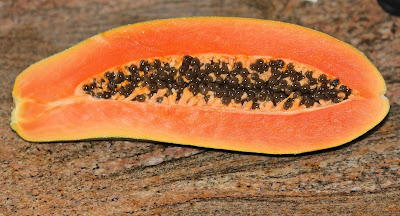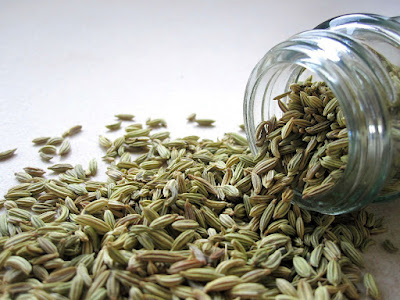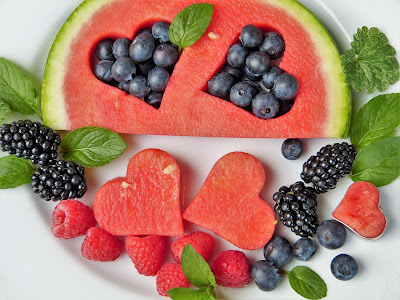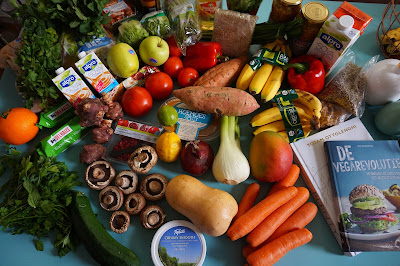Inflammation is a natural response by the body to protect and heal itself from injury, infection, or other harmful stimuli. It involves the immune system releasing chemicals that help to increase blood flow to the affected area, promote the delivery of immune cells, and initiate the healing process. While acute inflammation is a necessary and beneficial response, chronic inflammation can be harmful and contribute to various health conditions.
Certain foods possess anti-inflammatory properties and can help counter inflammation in the body. Here are some common examples:
Fatty fish: Fish like salmon, mackerel, sardines, and trout are rich in omega-3 fatty acids, which have been shown to reduce inflammation in the body.
Fruits and vegetables: Berries (such as strawberries, blueberries, and cherries), leafy greens (like spinach and kale), oranges, tomatoes, and other colorful fruits and vegetables contain antioxidants and other compounds that have anti-inflammatory effects.
Nuts and seeds: Almonds, walnuts, flaxseeds, and chia seeds are examples of foods that contain healthy fats and antioxidants, which can help reduce inflammation.
Whole grains: Foods like brown rice, quinoa, and whole wheat bread are rich in fiber and can have anti-inflammatory effects.
Spices and herbs: Turmeric, ginger, garlic, cinnamon, and rosemary are examples of spices and herbs that possess anti-inflammatory properties.
These foods work in different ways to counter inflammation. They often contain antioxidants, which help neutralize harmful free radicals in the body that can contribute to inflammation. They may also contain phytonutrients and other compounds that inhibit inflammatory pathways or reduce the production of pro-inflammatory substances.
It's important to note that while these foods can have anti-inflammatory effects, they should be part of an overall balanced diet and healthy lifestyle. If you have chronic inflammation or a specific medical condition, it's advisable to consult with a healthcare professional or a registered dietitian for personalized guidance.
Fitness Health Weight Loss Guru - Advice On Fitness, Health, Lose Weight, Belly Fat Loss, Fit Abs Workouts, Fitness Gyms, Healthy Diets, Belly Fat Burning Foods, Back Pain Exercises And Energy To Look And Feel Younger.
Tuesday, May 16, 2023
How To Counter Inflammation With Common Foods
Monday, May 8, 2023
Regular Exercise Can Counteract Inflammation
Yes, regular exercise has been shown to counteract inflammation and prevent many chronic diseases. Inflammation is a natural response of the body to protect itself from infection, injury, or damage. However, chronic inflammation, which can be caused by a variety of factors including a sedentary lifestyle, can lead to many diseases such as heart disease, diabetes, and cancer.
Regular exercise can reduce chronic inflammation by lowering the levels of inflammatory markers in the blood such as C-reactive protein (CRP), interleukin-6 (IL-6), and tumor necrosis factor-alpha (TNF-alpha). Exercise also increases the production of anti-inflammatory cytokines, such as IL-10, which can help reduce inflammation.
In addition to reducing inflammation, regular exercise can also help prevent or manage a variety of other diseases, including cardiovascular disease, type 2 diabetes, obesity, and some types of cancer. Exercise can also improve mental health, cognitive function, and bone density.
It's important to note that the type, intensity, and duration of exercise needed to achieve these benefits can vary depending on an individual's health status, fitness level, and personal goals. It's always a good idea to consult with a healthcare professional before starting a new exercise program.
Thursday, April 27, 2023
Top 10 Fruits That Promote Insulin Sensitivity
Here are the Top 10 Fruits That Promote Insulin Sensitivity:
Berries: Berries such as strawberries, blueberries, raspberries, and blackberries are rich in antioxidants and fiber, which can help improve insulin sensitivity and reduce inflammation.
Apples: Apples are high in fiber and polyphenols, which can help regulate blood sugar levels and improve insulin sensitivity.
Pears: Pears are also high in fiber and polyphenols, making them a good fruit choice for improving insulin sensitivity.
Kiwi: Kiwi is a good source of vitamin C, which has been shown to improve insulin sensitivity.
Grapefruit: Grapefruit is low in calories and high in fiber, making it a good fruit choice for improving insulin sensitivity.
Oranges: Oranges are high in vitamin C and fiber, which can help regulate blood sugar levels and improve insulin sensitivity.
Cherries: Cherries are rich in anthocyanins, which have been shown to improve insulin sensitivity.
Plums: Plums are high in fiber and polyphenols, which can help regulate blood sugar levels and improve insulin sensitivity.
Guava: Guava is high in vitamin C and fiber, making it a good fruit choice for improving insulin sensitivity.
Papaya: Papaya is a good source of fiber and contains compounds that have been shown to improve insulin sensitivity.
It is important to note that while these fruits can help improve insulin sensitivity, it is also important to limit the intake of fruits high in sugar such as bananas, grapes, and mangoes, as they can raise blood sugar levels. A balanced and healthy diet that includes a variety of fruits and vegetables is the best way to maintain good health.
Thursday, April 20, 2023
Boost Your Weight Loss With Fennel Seeds
Fennel seeds, is a common spice used in Indian cuisine and have been used for their medicinal properties for centuries. These tiny seeds are packed with a variety of health benefits, including aiding in weight loss and promoting good stomach health.
Weight Loss Benefits
Fennel seeds are a great natural weight loss aid due to their diuretic and metabolism-boosting properties. They help to reduce water retention in the body, which can lead to bloating and a feeling of heaviness. Additionally, fennel seeds contain compounds that stimulate the production of digestive enzymes, which can help speed up the metabolism and aid in the breakdown of fats.
Stomach Health Benefits
Fennel seeds are also known for their beneficial effects on digestive health. They contain compounds that help to relax the muscles in the gastrointestinal tract, which can help relieve symptoms of bloating, gas, and indigestion. Fennel seeds can also help to improve the production of gastric juices, which can aid in the digestion of food and prevent acid reflux.
Anti-Inflammatory Properties
Fennel seeds also have anti-inflammatory properties due to their high concentration of antioxidants. These antioxidants help to neutralize harmful free radicals in the body, which can contribute to inflammation and the development of chronic diseases. Studies have shown that fennel seeds can help reduce inflammation in the body, which can help prevent conditions such as arthritis, asthma, and certain types of cancer.
Other Health Benefits
In addition to their weight loss and stomach health benefits, fennel seeds have a variety of other health benefits. They are a rich source of vitamins and minerals, including vitamin C, potassium, and calcium. Fennel seeds also contain compounds that can help improve brain function and lower blood pressure, making them a great addition to a healthy diet.
How to Incorporate Fennel Seeds into Your Diet
There are many ways to incorporate fennel seeds into your diet. They can be added to soups, stews, and curries, or used as a seasoning for meats and vegetables. Fennel seeds can also be used to make a tea, which can be enjoyed on its own or mixed with other herbs and spices.
Conclusion
Fennel seeds are a highly nutritious and versatile spice that can provide a variety of health benefits. Whether you are looking to lose weight, improve your digestive health, or reduce inflammation in the body, fennel seeds are a great addition to any diet. So why not start incorporating this wonderful spice into your daily routine today?
Wednesday, April 12, 2023
The Difference Between Weight Loss And Fat Loss
The Difference Between Fat Loss And Weight Loss
Weight loss and fat loss are two terms that are often used interchangeably, but they refer to different things.
Weight loss refers to a reduction in overall body weight, which can be caused by a variety of factors such as loss of body fat, loss of muscle mass, loss of water weight, or a combination of these factors.
Fat loss, on the other hand, specifically refers to a reduction in body fat percentage. This means that the amount of body fat in relation to overall body weight has decreased.
It's important to note that weight loss doesn't necessarily equate to fat loss, as losing weight can come from a reduction in both fat and muscle mass. In fact, some weight loss programs may lead to muscle loss instead of fat loss, which can actually be detrimental to overall health and fitness.
Therefore, when it comes to achieving optimal health and fitness, it's important to focus on fat loss rather than just weight loss. This can be achieved through a combination of regular exercise, a healthy and balanced diet, and a sustainable lifestyle that promotes long-term weight management. Resistance training and high-intensity interval training (HIIT) can be particularly effective for reducing body fat while preserving lean muscle mass.
In summary, while weight loss refers to a reduction in overall body weight, fat loss specifically targets a decrease in body fat percentage. It's important to focus on sustainable fat loss rather than just weight loss for optimal health and fitness outcomes.
Thursday, April 6, 2023
Does Heart Health Improve With Weight Loss
Yes, heart health can improve with weight loss. There is a strong correlation between excess weight and a number of risk factors for heart disease, including high blood pressure, high cholesterol, and insulin resistance. By losing weight, these risk factors can be improved, leading to better heart health.
Here's the science behind it: Excess weight, particularly around the abdomen, can cause the body to become resistant to insulin, which can lead to high blood sugar levels and an increased risk of type 2 diabetes. This, in turn, can lead to an increased risk of heart disease, as high blood sugar levels can damage blood vessels and increase inflammation throughout the body.
Additionally, excess weight can lead to high blood pressure, which can also increase the risk of heart disease. This is because the heart has to work harder to pump blood through the body when blood pressure is high, which can put strain on the arteries and increase the risk of damage to the heart and blood vessels.
Finally, high levels of LDL (bad) cholesterol and low levels of HDL (good) cholesterol can also increase the risk of heart disease. Excess weight can contribute to high levels of LDL cholesterol, while losing weight can help to lower LDL cholesterol levels and increase HDL cholesterol levels.
When weight loss occurs, particularly when it is achieved through a healthy and balanced diet and regular exercise, these risk factors can be improved. For example, losing weight can help to reduce insulin resistance, lower blood sugar levels, and improve blood pressure. Additionally, weight loss can help to lower LDL cholesterol levels and increase HDL cholesterol levels, leading to better heart health overall.
It's important to note that weight loss should always be done in a healthy and sustainable way, and that it is just one piece of the puzzle when it comes to improving heart health. A healthy and balanced diet, regular exercise, stress management, and other lifestyle factors are also important for maintaining heart health over the long-term.
Wednesday, March 29, 2023
Fitness Health Weight Loss With The Green Med Diet
A 5-Meal 3-Day Med Diet Meal Plan
Here's a 5 meal, 3 day menu for the Green Med diet:
Day 1
Meal 1 - Breakfast:
Green smoothie with spinach, kale, banana, almond milk, and a scoop of plant-based protein powder
Whole grain toast with avocado and sliced tomatoes
Meal 2 - Snack:
Carrot sticks and cucumber slices with hummus
Meal 3 - Lunch:
Mixed green salad with cherry tomatoes, cucumber, and red onion, dressed with a homemade vinaigrette
Grilled chicken breast with lemon and herbs
Meal 4 - Snack:
Apple slices with almond butter and a sprinkle of cinnamon
Meal 5 - Dinner:
Roasted vegetable and chickpea bowl with quinoa, dressed with a lemon-herb vinaigrette
Day 2
Meal 1 - Breakfast:
Greek yogurt with fresh berries, almonds, and a drizzle of honey
Whole grain toast with almond butter and sliced banana
Meal 2 - Snack:
Mixed nuts and dried fruit
Meal 3 - Lunch:
Lentil soup with lots of leafy greens
Mixed green salad with cucumber, tomato, and red onion, dressed with a homemade vinaigrette
Meal 4 - Snack:
Celery sticks and cherry tomatoes with hummus
Meal 5 - Dinner:
Grilled salmon with lemon and herbs
Roasted asparagus and sweet potatoes
Day 3
Meal 1 - Breakfast:
Oatmeal with sliced banana, cinnamon, and almond butter
Fresh orange slices
Meal 2 - Snack:
Apple slices with almond butter
Meal 3 - Lunch:
Chickpea and vegetable stir-fry with brown rice
Mixed green salad with cherry tomatoes, cucumber, and red onion, dressed with balsamic vinaigrette
Meal 4 - Snack:
Carrot sticks and bell pepper slices with hummus
Meal 5 - Dinner:
Grilled portobello mushrooms with a side of roasted broccoli and cauliflower
Whole grain couscous with spinach, red onion, and lemon zest
Enjoy!
Tuesday, March 21, 2023
Fitness Health Weight Loss With The HMR Diet
The HMR Diet, or Health Management Resources Diet, is a weight loss program that focuses on meal replacement shakes, entrees, and snacks. The diet is designed to be low in calories and high in protein, with the goal of promoting weight loss while preserving muscle mass.
One day meal plan for the HMR Diet:
Breakfast:
HMR Shake made with vanilla powder and almond milk
Sliced fruit, such as strawberries or bananas
Snack:
HMR Multigrain Hot Cereal
Lunch:
HMR Entree, such as Chicken Enchiladas with Tomatillo Sauce
Side salad with mixed greens, cherry tomatoes, and vinaigrette dressing
Snack:
HMR 70 Plus Chocolate Shake
Dinner:
HMR Entree, such as Beef Stroganoff with Noodles
Steamed vegetables, such as broccoli or green beans
Dessert:
HMR Chocolate Brownie Bar
The HMR Diet also encourages physical activity and provides coaching and support to help individuals make lifestyle changes for long-term weight loss success. It is important to note that while meal replacement shakes and entrees can be convenient for weight loss, it is important to incorporate whole foods into the diet for optimal nutrition. It is recommended to consult with a healthcare professional before starting any new diet plan.
Thursday, March 9, 2023
Effective Weight Loss On A Vegan Diet
A vegan diet is a plant-based diet that excludes all animal products, including meat, dairy, eggs, and honey. People choose to follow a vegan diet for various reasons, including ethical, environmental, and health concerns. Veganism has become increasingly popular in recent years, with more and more people adopting the lifestyle for various reasons.
A vegan diet can be nutritious and healthy when planned properly. It is essential to consume a variety of plant-based foods to ensure adequate intake of all essential nutrients. Below are three meal examples that provide a well-rounded, plant-based diet.
Breakfast: Oatmeal with Fruit and Nuts
Oatmeal is a hearty and nutritious breakfast option that is easy to prepare. To make a vegan oatmeal, simply cook rolled oats in water or plant-based milk and add your desired toppings. Here's an example:
1/2 cup rolled oats
1 cup unsweetened almond milk
1/2 banana, sliced
1/4 cup blueberries
1 tablespoon chopped almonds
1 tablespoon chia seeds
Instructions:
In a medium saucepan, bring the almond milk to a boil.
Add the rolled oats and reduce heat to low. Simmer for 5-7 minutes, stirring occasionally, until the oats are cooked and the mixture is thick and creamy.
Remove from heat and stir in the banana slices, blueberries, almonds, and chia seeds.
Serve hot and enjoy!
This meal is high in fiber, protein, and healthy fats. Oatmeal is an excellent source of complex carbohydrates that provide sustained energy throughout the morning. The fruit and nuts add vitamins, minerals, and antioxidants that support overall health.
Lunch: Vegan Buddha Bowl
A Buddha bowl is a trendy meal that consists of a variety of plant-based foods, typically served in a bowl. It is a great way to get a variety of nutrients in one meal. Here's an example:
1 cup cooked quinoa
1/2 cup chickpeas, drained and rinsed
1/2 cup roasted sweet potato
1/2 cup sautéed kale
1/4 cup sliced avocado
1 tablespoon tahini dressing
Instructions:
Cook quinoa according to package instructions.
Roast sweet potato in the oven at 400°F for 20-25 minutes or until tender.
Sauté kale in a pan with olive oil and garlic for 5-7 minutes.
Assemble the Buddha bowl by adding the cooked quinoa, chickpeas, sweet potato, and kale to a bowl.
Top with sliced avocado and drizzle with tahini dressing.
This meal is packed with protein, fiber, and vitamins. Quinoa and chickpeas are both excellent sources of plant-based protein, while sweet potato and kale provide fiber and antioxidants. Avocado is a source of healthy fats, while tahini dressing provides flavor and healthy fats.
Dinner: Vegan Lentil Curry
Curry is a flavorful and satisfying meal that can easily be made vegan. Lentils are an excellent source of plant-based protein and fiber, making them a great addition to a vegan diet. Here's an example:
1 cup dry lentils, rinsed and drained
1 tablespoon coconut oil
1 onion, chopped
3 cloves garlic, minced
1 tablespoon grated fresh ginger
1 tablespoon curry powder
1 can diced tomatoes
1 can coconut milk
1/2 cup vegetable broth
Salt and pepper, to taste
Instructions:
In a large pot, heat coconut oil over medium heat.
Add the chopped onion and sauté for 3-5 minutes, until the onion is soft and translucent.
Add the minced garlic, grated ginger, and curry powder to the pot. Cook for 1-2 minutes, stirring constantly.
Add the lentils, diced tomatoes, coconut milk, and vegetable broth to the pot. Stir to combine.
Bring the mixture to a boil, then reduce heat to low and simmer for 25-30 minutes, or until the lentils are tender and the curry is thick and fragrant.
Season with salt and pepper to taste.
Serve hot over rice or with naan bread.
This meal is a complete source of protein, fiber, and complex carbohydrates. Lentils are an excellent source of plant-based protein and fiber, while the coconut milk provides healthy fats. The spices and vegetables provide antioxidants and other essential nutrients, making this meal both delicious and nutritious.
A well-planned vegan diet can provide all essential nutrients while promoting overall health and well-being. By incorporating a variety of plant-based foods in each meal, it is possible to create delicious and nutritious vegan meals. The above meal examples are just a few of the endless possibilities for a vegan diet. It is important to consult a registered dietitian to ensure proper nutrient intake when transitioning to a vegan diet.
Thursday, March 2, 2023
Strength Training With Examples
Strength training, also known as resistance training or weightlifting, involves using resistance to build muscle and increase strength. This type of exercise is beneficial for people of all ages and fitness levels, as it can improve overall health, prevent injury, and support weight loss efforts. Here are some examples of strength training exercises:
Squats: Squats are a compound exercise that work multiple muscle groups, including the quadriceps, hamstrings, and glutes. To perform a squat, stand with your feet hip-width apart and your toes pointing forward. Bend your knees and lower your hips back and down, keeping your chest lifted and your weight in your heels. Return to standing position and repeat for several reps.
Push-ups: Push-ups are a classic exercise that work the chest, triceps, and shoulders. To perform a push-up, start in a plank position with your hands shoulder-width apart and your elbows close to your body. Lower your body down towards the ground, keeping your core engaged and your spine neutral. Push back up to starting position and repeat for several reps.
Deadlifts: Deadlifts work the back, hamstrings, and glutes. To perform a deadlift, stand with your feet hip-width apart and your toes pointing forward. Bend down and grip the bar with your hands shoulder-width apart. Engage your core and lift the bar up off the ground, keeping your back straight and your shoulders back. Lower the bar back down to the ground and repeat for several reps.
Pull-ups: Pull-ups work the back, biceps, and shoulders. To perform a pull-up, hang from a bar with your hands shoulder-width apart and your palms facing away from you. Engage your shoulder blades and pull yourself up towards the bar until your chin is above the bar. Lower yourself back down and repeat for several reps.
Lunges: Lunges work the quadriceps, hamstrings, and glutes. To perform a lunge, step forward with one foot and lower your back knee down towards the ground. Keep your front knee directly over your ankle and your chest lifted. Push back up to starting position and repeat on the other side.
Dumbbell Rows: Dumbbell rows work the back, biceps, and shoulders. To perform a dumbbell row, stand with your feet hip-width apart and hold a dumbbell in one hand. Hinge forward at the hips and place your opposite hand on a bench or chair for support. Keeping your back flat, pull the dumbbell up towards your chest, squeezing your shoulder blades together. Lower the dumbbell back down and repeat for several reps before switching sides.
Strength training can be done using bodyweight exercises, free weights, weight machines, resistance bands, or other equipment. It’s important to start with a weight that feels challenging but manageable, and to focus on proper form and technique to prevent injury. Gradually increasing weight and reps over time can help build muscle and increase strength.
This Will Help You On Your Weight Loss Journey...Click Here.
Do Men And Women Have To Approach Weight Loss Differently
When it comes to weight loss, men and women may need to approach the process differently due to a variety of physiological and lifestyle factors. Here are some key considerations for each gender:
For Women:
Hormonal Changes: Women experience a variety of hormonal changes throughout their lives that can impact weight loss efforts. For example, fluctuations in estrogen and progesterone levels during the menstrual cycle can lead to water retention and bloating, which can make it harder to track progress. Additionally, women may experience more difficulty losing weight during menopause due to changes in hormone levels.
Focus on Strength Training: While cardiovascular exercise is important for weight loss, women may benefit from incorporating strength training into their routine to build lean muscle mass. Muscle tissue burns more calories at rest than fat tissue, so building muscle can help boost the metabolism and aid in weight loss.
Prioritize Nutrient-Dense Foods: Women may also benefit from prioritizing nutrient-dense foods such as fruits, vegetables, whole grains, and lean proteins in their diet. These foods can help support optimal hormone balance and provide the body with the nutrients it needs to function properly.
Consider Caloric Intake: Women typically have smaller bodies and lower calorie needs than men, so it’s important for women to consider caloric intake when trying to lose weight. Consuming too few calories can slow the metabolism and make it harder to lose weight, so it’s important to find a healthy balance that supports weight loss without depriving the body of essential nutrients.
For Men:
Focus on Resistance Training: Men typically have more lean muscle mass than women, which can help support a faster metabolism and aid in weight loss. However, men may benefit from focusing more heavily on resistance training than cardiovascular exercise to build and maintain muscle mass.
Prioritize Protein: Men may also benefit from prioritizing protein in their diet to support muscle growth and repair. Consuming adequate protein can also help promote feelings of fullness and satiety, which can prevent overeating and support weight loss.
Consider Caloric Intake: Men typically have larger bodies and higher calorie needs than women, so it’s important for men to consider caloric intake when trying to lose weight. Consuming too many calories can slow weight loss progress, so finding the right balance is key.
Manage Stress: Men may also benefit from managing stress levels when trying to lose weight. High levels of stress can lead to increased cortisol levels, which can make it harder to lose weight and may contribute to weight gain.
Overall, while men and women may need to approach weight loss differently, there are some universal principles that apply to both genders. For example, consuming a healthy, balanced diet and engaging in regular exercise are important for weight loss regardless of gender. Additionally, staying hydrated, getting enough sleep, and managing stress levels can also support weight loss efforts. By considering the unique physiological and lifestyle factors that impact weight loss for men and women, it’s possible to develop an effective and sustainable weight loss plan that meets individual needs and goals.
Wednesday, March 1, 2023
Why Does Fat Accumulate Differently In Men And Women
There are several reasons why fat accumulates differently in men and women. Some of the key factors include:
Hormones: Men and women have different levels of hormones that affect how fat is stored in the body. For example, women have higher levels of estrogen, which promotes the storage of fat in the hips, thighs, and breasts. Men have higher levels of testosterone, which promotes the storage of fat in the abdomen.
Genetics: Genetics play a significant role in determining where fat is stored in the body. Some people may have a genetic predisposition to store fat in certain areas, such as the abdomen or hips.
Metabolism: Men tend to have a higher metabolic rate than women, which means they burn more calories at rest. This can make it easier for men to maintain a healthy weight and prevent fat accumulation.
Lifestyle: Differences in lifestyle factors such as diet and exercise can also contribute to differences in fat accumulation. For example, men may be more likely to engage in physical activity that targets the abdominal muscles, which can lead to a more pronounced accumulation of fat in this area.
While there are many factors that contribute to the differences in fat accumulation between men and women, hormones are thought to play a key role in determining where fat is stored in the body.












